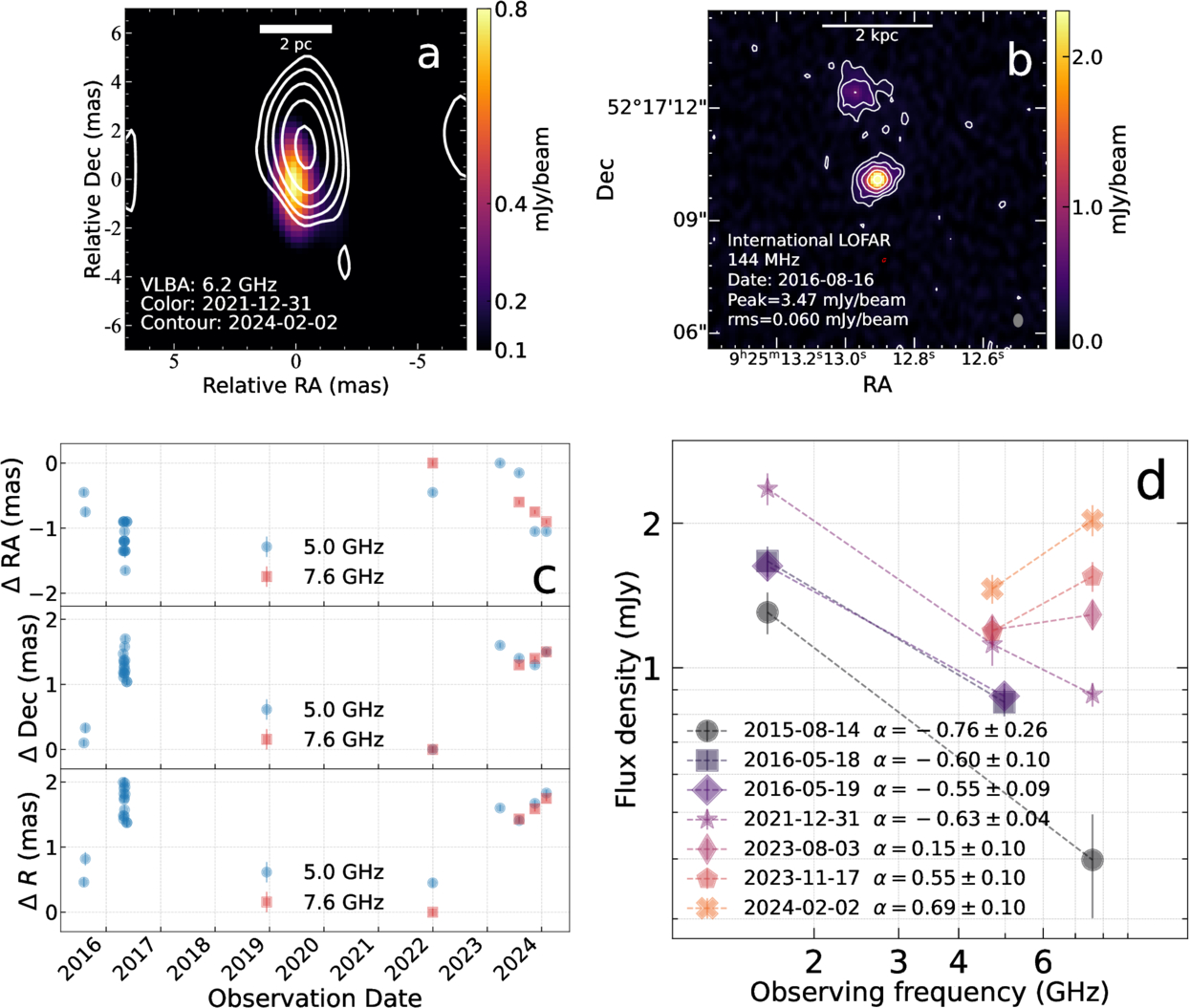
A relativistic jet in the radio-quiet active galactic nucleus Mrk 110
Ailing Wang
This deceleration was accompanied by a dramatic spectral transformation from a steep to an inverted spectrum, with the 7.6 GHz flux more than doubling, consistent with the emergence of a new self-absorbed jet component (Figure 1-d). Complementary LOFAR observations at 144 MHz revealed diffuse, kpc-scale relic emission aligned with the parsec-scale jet, suggesting long-term stability of the outflow axis across timescales from years to millions of years (Figure 1-b).

Figure1. Radio observations of Mrk 110. (a) VLBA 6.2 GHz images of Mrk 110 from 2021 December 31 (color scale) and 2024 February 2 (contours), showing a core shift of ∼1.6 mas. The image center is set at the 2021 December peak position (R.A. = 09:25:12.84781, decl. = +52:17:10.3862). (b) International LOFAR image at 144 MHz observed on 2016 August 16, revealing a ∼1.7 kpc northern extension aligned with the parsec-scale jet. (c) Peak position evolution. (d) Change of the radio spectrum from 2015 to 2024, showing transformation from a steep (α = −0.76) to inverted (α = +0.69) spectral index.
These results provide the first direct evidence of intermittent relativistic jet formation in a galaxy long classified as radio-quiet. The observed kinematics and spectral evolution are consistent with predictions of magnetically arrested disk (MAD) models, where transient magnetic flux accumulation near the black hole enables episodic jet launching [1]. The discovery implies that the conventional radio-loud/quiet dichotomy [2] reflects time-averaged states rather than intrinsic differences in jet production capability. Mrk 110 thus represents a crucial transitional case linking radio-quiet Seyfert galaxies with jet-dominated AGN, showing that relativistic outflows may emerge across the AGN population but only during specific accretion phases. This finding highlights a hidden channel of kinetic feedback in radio-quiet systems, with important implications for understanding AGN–host galaxy co-evolution.
References:
- Lalakos, A., Tchekhovskoy, A., Most, E. R., et al. 2025, arXiv:2505.23888
- Kellermann, K. I., Sramek, R., Schmidt, M., Shaffer, D. B., & Green, R. 1989, AJ, 98, 1195
Link to the paper:
The Astrophysical Journal Letters, 987:L26 (12pp), 2025 July 10
Contact:
Ailing Wang, Institute of High Energy Physics, Chinese Academy of Sciences, People’s Republic of China. Email: wangal@ihep.ac.cn
Tao An, Shanghai Astronomical Observatory, Chinese Academy of Sciences, People’s Republic of China. Email: antao@shao.ac.cn